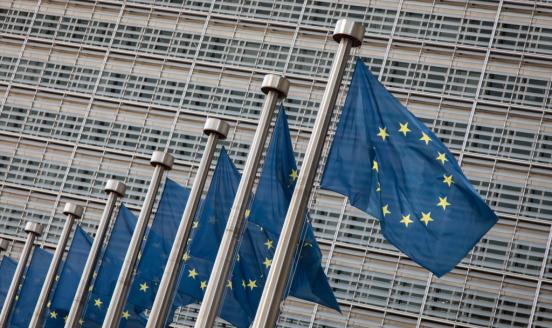Is it too late for Eurobonds to draw a line under the crisis?
What’s stake: Although considered by many as a non-starter for political, legal and economic reasons, there have increasing calls for a more definitive solution to the euro crisis that would involve the mutualisation of debt in the euro area. Short of a definitive solution, European policymakers could in the meantime draw a roadmap towards deep changes to economic governance embedded in a far-reaching Treaty overhaul. This discussion is on-going in Germany but appears lagging in the rest of the euro area. In the meantime, it seems difficult to avoid the ECB playing a bigger role in the crisis resolution either directly or through a possible leverage of the EFSF’s resources.
Of silver bullets, necessary roadmaps and bad ideas
Mario Monti argued that markets, so far, have been winning a game of divide and conquer, simply because countries are not providing a common response. The current lack of credibility of recent proposals is bound to generate, further down the road, a disruptive ‘transfer union’ that would likely lead to acrimony domestically and across borders. A European vision, based on the creation of a European instrument, backed by a precise timetable, would be a better way to restore trust and stability.
Yannos Papantoniou makes the case for Eurobonds in a Project Syndicate column. Combined with a fully-fledged debt facility, enhanced powers for the ECB so that it can act as a lender of last resort, and solid economic governance, Eurobonds would stop this crisis. Eurobonds would allow eurozone members to pool their financial strength and, by enhancing the attractiveness of the euro as a reserve currency, hold down borrowing costs to such an extent that AAA-rated countries are not overburdened. Legal problems could also be overcome in the short term by designing Eurobonds to include credit guarantees, repayment priorities, and the use of specific tax streams as collateral.
Wolfgang Münchau writes that the good news is that the eurozone does not need the eurobond itself to solve its crisis, only a credible roadmap and process that leads to the eventual creation of a eurobond. But the author notes in a Eurointelligence briefing that getting a roadmap before 2013 will be politically extremely difficult for Merkel. The view among her advisers is that the EFSF has reached the end of its rope, as it cannot be easily increased without endangering the French credit rating. It is this realisation that has led close advisers of Ms Merkel to become more open-minded about the idea of a eurozone bond. But the parliamentary CDU/CSU remains sceptical, and the FDP is dead set against the idea.
Daniel Gros argues that holding taxpayers in thrifty countries fully and unconditionally liable for spending decisions taken in other countries would most likely turn into a poison pill for EMU. Whatever the variant, Eurobonds only make sense in a political union – and given the vast differences in national political systems and their quality of governance, any political union created on paper will not work in practice. Political resistance against EMU would rise in the stronger countries, eventually leading to a probable break up of EMU. Based on World Bank transparency and governance indicators, Gros concludes that the differences in the quality of governance, more than any technical problems, are probably the reason why the electorate in Northern Europe is skeptical about Eurobonds. With these fundamental differences in the way different member countries work it would in practice be impossible to conduct a unified fiscal policy even if the post of a Eurozone finance minister were created.
Hans-Werner Sinn argues that creating Eurobonds would allow imbalances to be perpetuated while they should be corrected. The interest rates that countries like Italy and Spain have to pay today are only half as high as they were in 1995, before the conversion rates within the eurozone were set; likewise, interest-rate spreads vis-à-vis Germany today are only two-thirds of their size then. And these spreads are necessary to keep capital flows within the eurozone in check.
Is the Karlsruhe ruling preventing eurobonds?
When the Karlsruhe Court approved the constitutionality of German participation in the original Greek rescue package and its rescue tools, it also set a series of democratic conditions for Germany’s future involvement in permanent transfer mechanisms.
Jacob Funk Kirkegaard discusses whether these conditions could prove problematic for the introduction of Eurobonds. For Kirkegaard, the cloud cast introduced by the ruling over Germany’s possible future acceptance of Eurobonds is unambiguous. In the words of the court “the Bundestag, as the legislature, is also prohibited from establishing permanent mechanisms under the law of international agreements which result in an assumption of liability for other states’ voluntary decisions, especially if they have consequences whose impact is difficult to calculate.” What would therefore be required for Eurobonds are changes to both the European Treaty and the German Constitution. This is a monumental but not impossible political and legal challenge for Europe in the years ahead. Starting with the need for changes to the basic German law, or Grundgesetz, actually a relatively minor issue, as the German Constitution is among the most frequently altered constitutions in the European Union. It has been changed 57 times since 1949. The real political obstacle for Eurobonds seems then to the EU Treaty, which would have to be amended. Here, the only realistic political option for Eurobonds is to legally enable and implement them only for the euro area. This could be permitted by the Lisbon Treaty under the “enhanced cooperation procedure” specified in article 20.
Ulrike Guerot from the ECFR suggested recently that the German political class is far less negative about the idea of eurobond that it seems. She argued that Germany was ready for more Europe but also pointed out, especially in the wake of the Karlsruhe Constitutional Court’s decision on the EFSF that any further permanent mechanism which would result in the assumption of liability of another state might well require a change in the German basic law. The German agenda is probably to resist eurobonds until the 2013 election give rise the democratic debate that is necessary to legitimise it.
Genuine proposals or halfway houses: Blue bonds, ESBies and synthetic bonds
Markus Brunnermeier, Luis Garicano, Philip Lane, Stijn Van Nieuwerburgh, Marco Pagano, Ricardo Reis, Tano Santos and Dimitri Vayanos – have joined forces in a structure called euro-nomics – to provide concrete ideas to solve the ongoing eurozone crisis. To address three shortcomings in the design of the eurozone that are central to the current problems – the fragmentation of Europe’s sovereign debt markets which limit the supply of safe assets, the perverse incentives that tie banks and sovereigns in a diabolic loop, and the distortion in sovereign debt markets – the authors propose the creation of European Safe Bonds (ESBies). A newly developed European Debt Agency (EDA) would – in accordance with existing European Treaties, without requiring more fiscal integration, and without distorting the incentives of individual member states –buy the sovereign bonds of member nations according to the relative size of the different member States, passively hold these bonds, and use them as collateral to issue two securities. The first security, the ESBies, would be a senior claim on the payments from the sovereign bonds held in the portfolio. The second security would have a junior claim on these payments – that is, it would be first in line to absorb whatever loss is realized in the pool of sovereign bonds that serve as collateral for these issues.
Barry Eichengreen – writing before the ESBies proposal – cast doubts on halfway proposals. If Europe goes down the line of Eurobonds, it has to be Serious Eurobonds. Halfway houses, for example dividing sovereign debts into a first tier up to 60 per cent of each country’s GDP that will be guaranteed by euro area members as a group, and a second tier that will remain each nation’s responsibility, will no longer cut it. Italy would presumably be asked to make a pro rata contribution to the fund servicing the Eurobonds. And it would still have debt in the amount of 60 per cent of its GDP for which the Italian nation alone was responsible. The combination would not render its position sustainable in the absence of growth. Daniel Gros makes a similar point against the system of Blue-Red bonds originally proposed by Bruegel saying that it could not work in an environment where the countries concerned have a debt overhang. If the issuance of Eurobonds were limited to a part of national debt (say only 40-60% of GDP as proposed), highly indebted countries would immediately be forced into a debt restructuring, as they could no longer find buyers for the part only guaranteed nationally.
Thorsten Beck, Harald Uhlig and Wolf Wagner propose the introduction of synthetic Eurobonds. They suggest creating a European debt mutual fund, which holds a mixture of the debt of Eurozone member (for example, in proportion to their GDP). This fund then issues tradable securities – which could be called synthetic Eurobonds – whose payoffs are the joint payoffs of the bonds in its portfolio. A key advantage of these bonds is that there will be no built-in guarantees or bailouts by other countries. To be sure, the bonds are not completely risk-free, but diversification benefits will insure that a drastic reduction in payments will be unlikely. Put differently, they will be reasonably safe, and safe enough for most practical purposes.
ECB in the game
Paul De Grauwe argues that the essential problem of the euro area is not so much the absence of a supranational borrowing authority but rather its lack of credible lender of last resort. The existence of a lender of last resort prevents bank runs and avoids panics to set in. He argues that the current strategy which is essentially to backstop the banks without backstopping government might prove more expensive than doing both.
Charles Wyplosz argues that the only safe way to end the eurozone crisis is to let the ECB play a frontline role by putting a floor on sovereign debt prices, allow government to borrow new debt by having the ECB guarantee all new debt (in excess of the roll over needs). To ease German worries about morel hazard this should be accompanied by stronger national fiscal framework that includes fiscal rules and credible enforcement mechanism. Short of this, the ECB will eventually be forced into a quasi-fiscal role without reaping the benefits of its actions by always doing too little too late.
Wilem Buiter and Ebrahim Rahbari wrote a very complete overview of the future of the euro area where they outline a muddle through scenario, which involves a large liquidity facility, some degree of debt reduction and a resolution regime for European banks. They also see
the expansion of the quasi-fiscal role of the ECB as one possible option in the face of political difficulty but do not see an outright “santa” ECB taking hold. They conclude by stressing that Europe has the institutional and political capacity to deal eventually with the current crises and to make the necessary reforms to ensure its long-term survival but that both elected policymakers and the ECB are likely to continue to disappoint repeatedly.
*Bruegel Economic Blogs Review is an information service that surveys external blogs. It does not survey Bruegel’s own publications, nor does it include comments by Bruegel authors.

